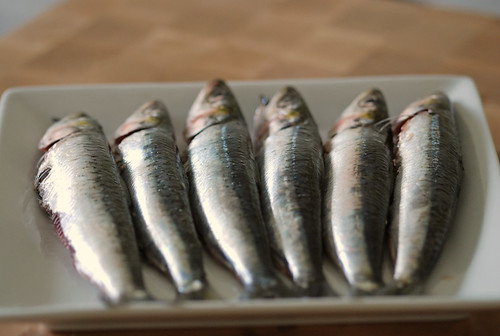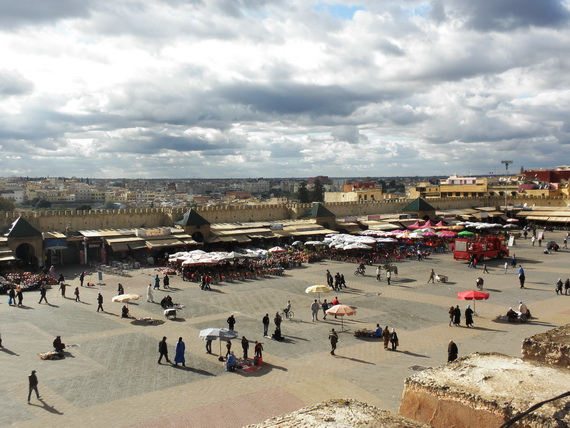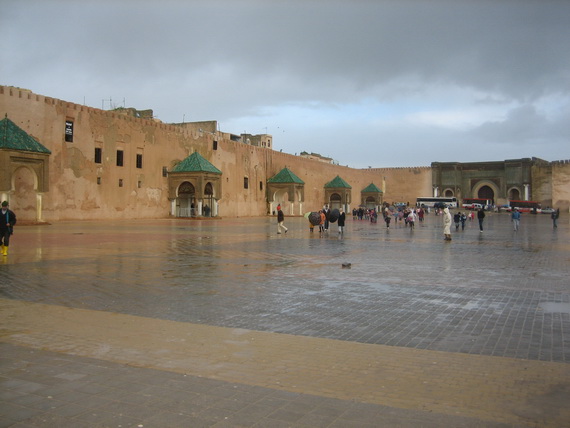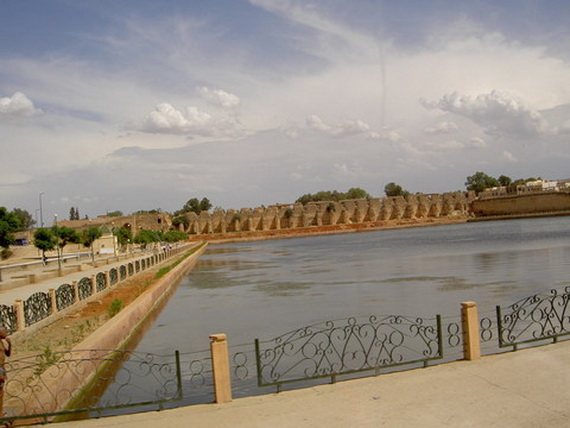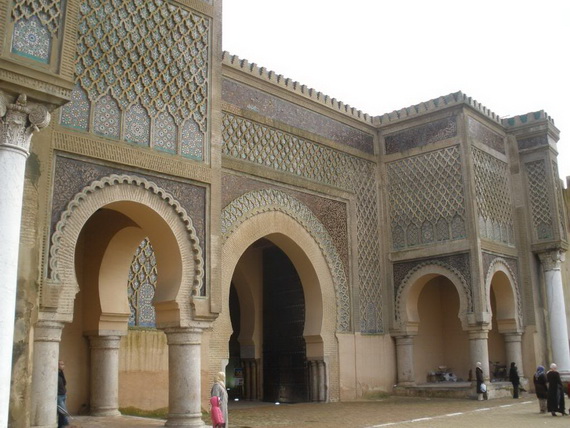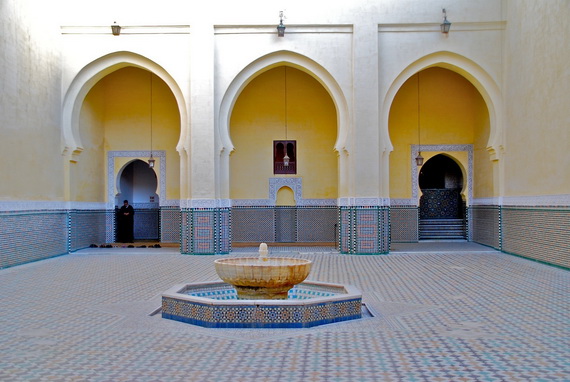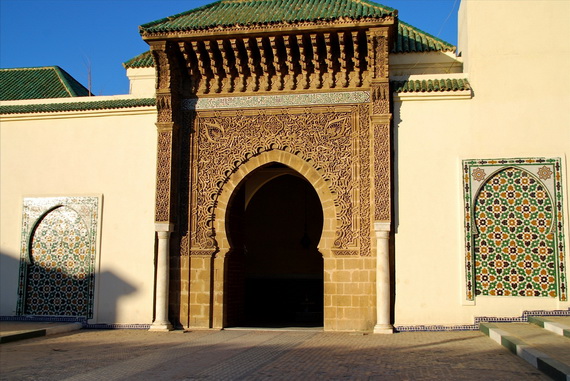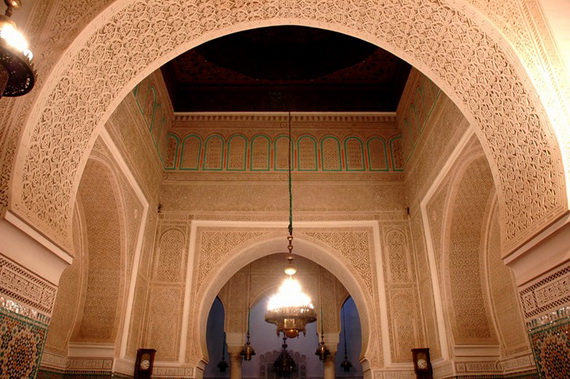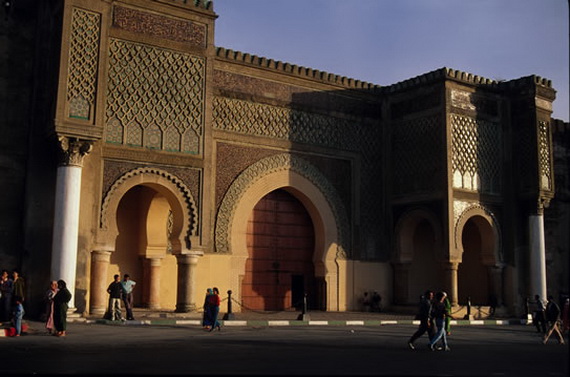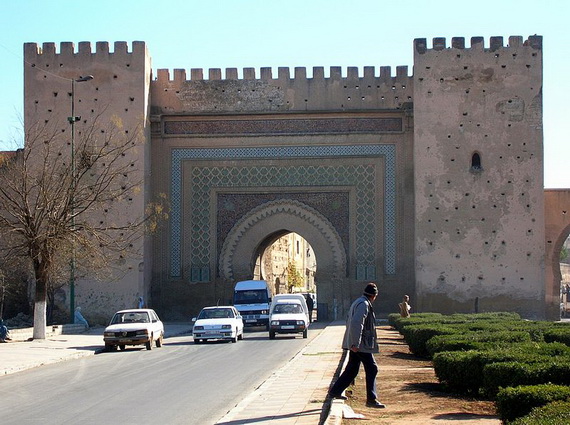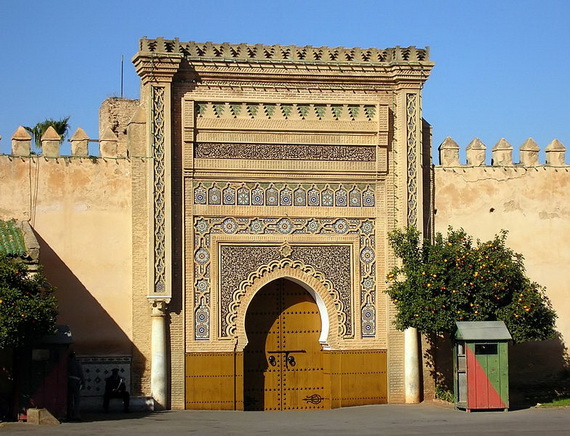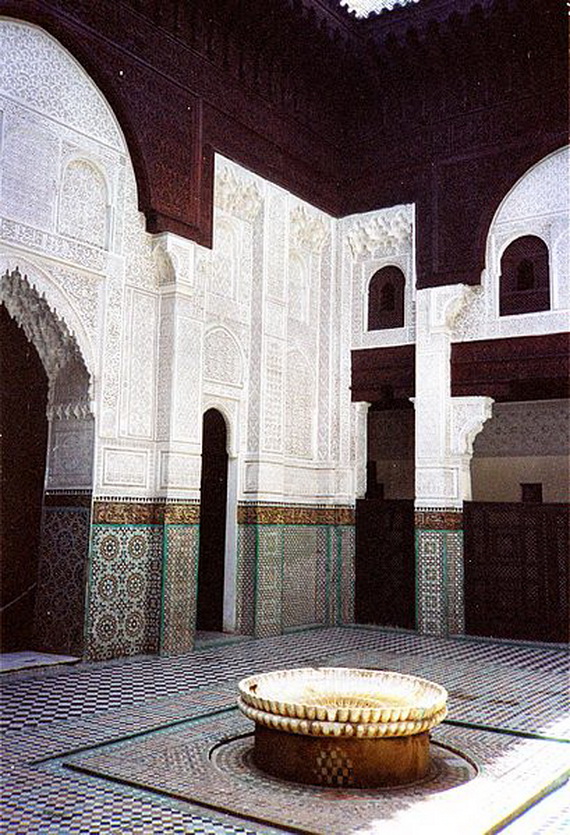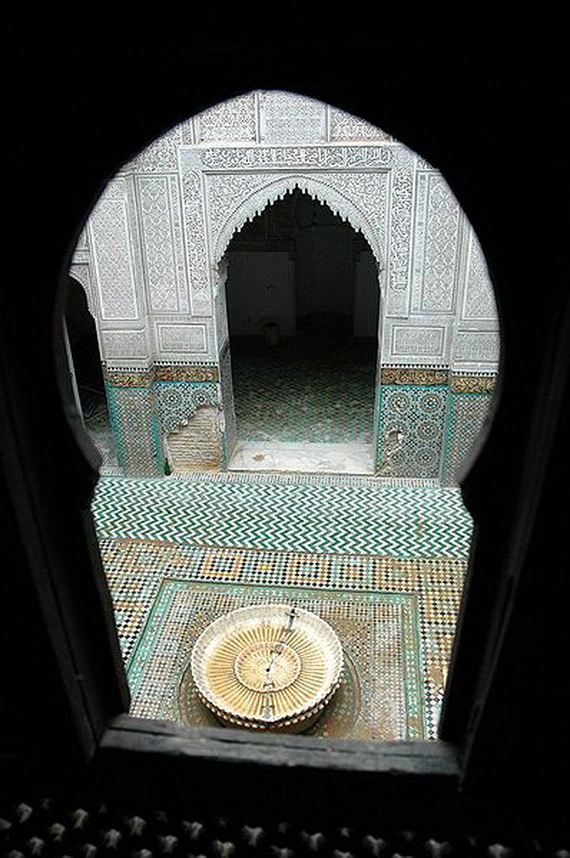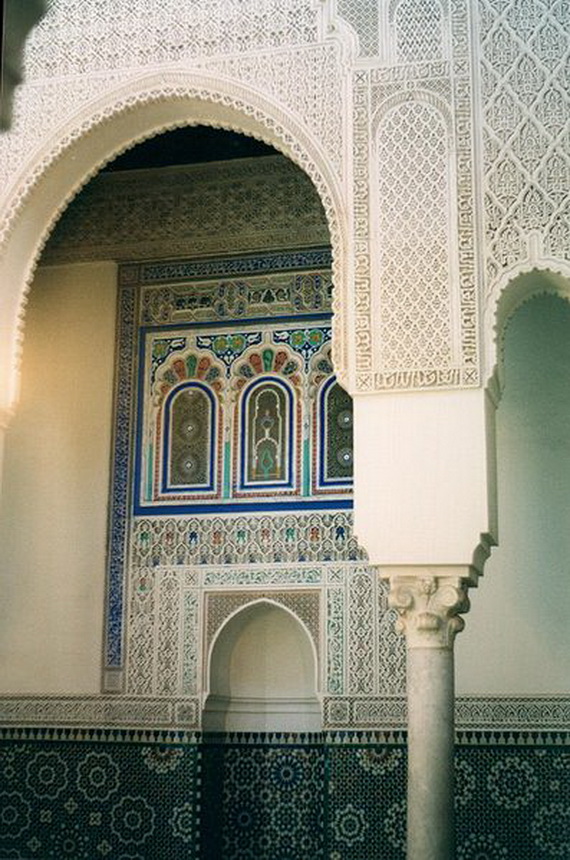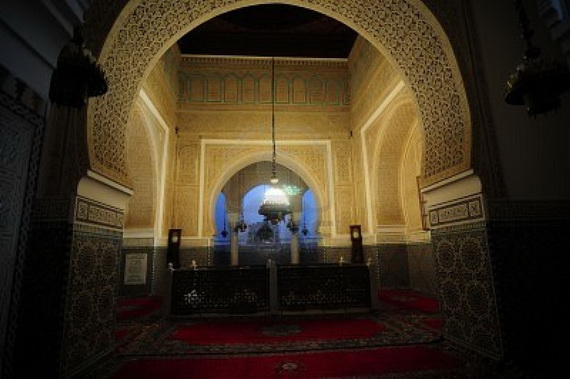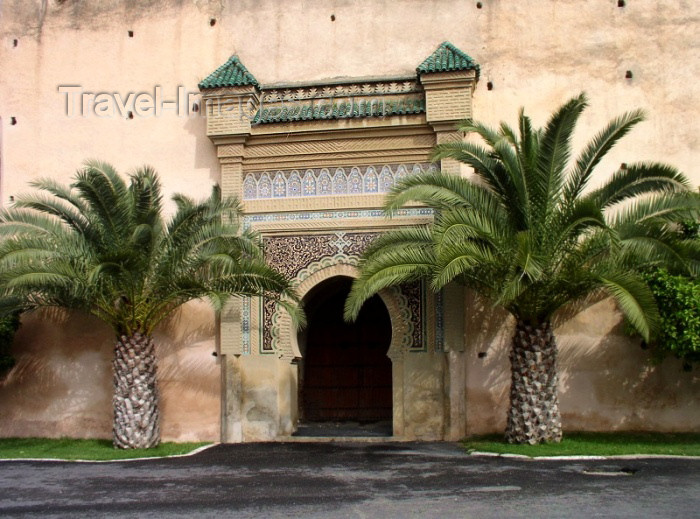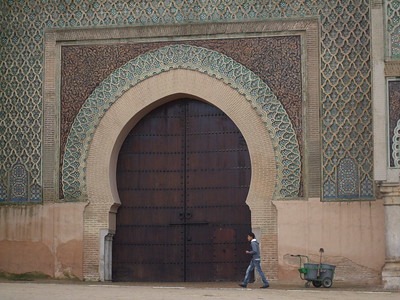Morocco has a rich cultural and civilizational heritage and diverse.
Each region has its peculiarities, thus contributing to national culture and civilizational heritage. Among the priority obligations include the protection of heritage in all its forms and the preservation of historical monuments.
Since Morocco's independence, many changes have occurred socio-cultural, as part of the logic of inevitable changes experienced by most countries during the second half of the twentieth century. This is taking into account the new conditions that are organizing the arts for decades.

Recognizing the importance of culture on individual and group plans, the Moroccan government has decided to devote 1% of local budgets for construction, in each prefecture or province, of a cultural complex includes a theater and sponsorship of artists.
He also advocated the creation in each region, two theater companies that take care of Local Authorities by providing them with appropriate means. In the cultural sphere, Morocco has two important institutions:
- Higher Institute of Archaeology, established in 1986;
- National Institute of Dramatic Art and Cultural Activities, created in 1987.
Morocco also has fifteen museums under the Ministry of Cultural Affairs. These institutions are of three kinds:
archaeological museums
ethnographic museums
specialized museums
The collections in these museums trace the history and evolution of customs, habits and Moroccan traditions through time. Most of these museums are housed in former palaces or homes. By the splendor of their spaces, exceptional collections they house and the singularity of some of their objects, these museums worth visiting:
Archaeological museums
- The Archaeological Museum in Larache
It was inaugurated in 1973, in Borj constructed by Sultan Yusuf Ben Merinid Abdelhaq (1231-1253). The museum is dedicated to discoveries unearthed mainly in Lixus site. The pieces presented back to the Phoenician, Carthaginian, Mauritanian, Roman and Islamic.
Address:
Archaeological Museum of Larache
Tel. : (212) (9) 91-20-92
- The Archaeological Museum of Rabat:
Created in the 30s, this museum houses the archaeological finds unearthed in the various excavated sites at the time, including those of Volubilis, Banassa, Thamusida. Its mission is to present, through the remains contained in it, the history of Morocco from prehistory to the Islamic era: tools of prehistoric humans in neolithic furniture, Libyan-Berber inscriptions in the splendid collection of Roman gods, of statuary in bronze or marble to ceramics of the first cities of the Islamic era. A variety of objects, tools find a place such as bronze busts of Juba II, of Cato, as well as masterpieces of the statues of the youth crowned, the old fisherman's dog, morning glory. . .
Address:
Archaeological Museum:
23, rue Brihi-Rabat
Tel. : (212) (7) 70-19-19
- The Museum Kasbah in Tangier:
The museum was established in 1920 in a palace rebuilt by Pasha If Ali Ben Abdellah El Rifi in the eighteenth century on the ruins of an ancient citadel. The museum has two sections:
An archaeological museum where we discover various aspects of pre-Islamic Morocco and from the prehistoric Paleolithic to the Roman period of Tingitana.
An ethnographic museum that demonstrates the rich aspects of ethnography Moroccan tapestry, pottery, ceramics, wood, jewelry and ...
Address:
El Kasba Kasba museum Sahat Tangier
Tel. : (212) (9) 91-20-92
- The Archaeological Museum in Tetouan:
This museum was created in 1939. It houses collections of prehistoric and archaeological discoveries in pre-Islamic sites in northern Morocco. Among others there are the reconstitution of the Henge of M'zoura, and a fine collection of mosaics and Moroccan currency.
Address:
Archaeological Museum in Tetouan
2, Rue Ben Hssain, Tetouan
Tel. : (21) (9) 96-73-03
Ethnographic museums
- The Ethnographic Museum of Chefchaouen
Inaugurated in 1985, this museum occupies the entire port area of Kasba, built in 1471 by Moulay Rachid Ben Ali, founder of the principality of Banu Rashid Chefchaouen. Sumptuous, this Kasba combines the beautiful Andalusian style garden with beautiful red crenellated walls. At this beautiful site is added that the museum's collection that has the merit to highlight: musical instruments, weapons, embroidery, wooden chests, pottery ... characteristics of folk art Chefchaouni, in particular, and northern Morocco in general.
Address:
Museum of Chefchaouen
Kasbah, Chefchaouen Outa Hammam
Tel. : (212) (9) 98-67-61
- The Museum Sidi Mohamed Ben Abdellah in Essaouira:
This museum was founded in 1980. It is located in an old house in the nineteenth century. It houses collections of ethnographic nature of the city and its regional cultural area. Thus there are musical instruments, jewelry, weapons, and marquetry are considered specific to the city of Essaouira and its region.
Address:
Sidi Mohamed Ben Abdellah Museum
Derb Laalouj-Essaouira
Tel. : (212) (4) 47-23-00
- Batha Museum in Fez:
The Batha palace, built during the reign of Moulay Hassan I (1873-1894) and Moulay Abdelaziz (1894-1908), is a museum in 1915. On the Hispano-Moorish architecture, the museum combines the splendor of the premises to the pleasure that comes from the collection it houses. This reflects the richly traditional art from Fez whose richness and variety manifested in carved wood, zellige, wrought iron, sculpted plaster, etc.. Added to this are famous for its ceramics "Fez blue", embroidery, coins, carpets, jewelry and astrolabes ...
Address:
Batha Museum:
Ksar el Batha, Fez Medina
Tel. : (212) (5) 63-41-16
- The Dar Si Saïd Museum in Marrakech:
Built in the late nineteenth century by Si Said - brother of Ba Ahmed, grand vizier of Moulay Abdelaziz and Chamberlain of Sultan Moulay Hassan I - to be his remains. Dar Si Said was turned into a museum in 1932. This museum houses a wonderful collection of carpets, doors, chests, arms, clothing, jewelry ... that reflect the thought and skill of the craftsman regions of Upper, the Anti-Atlas regions, presaharic.
Address:
Dar Si Said Museum Bahya Derb El-Riad Marrakech Zitoun
Tel. : (212) (4) 44-24-64
- The Dar Jamai Museum in Meknes:
The building dates from 1882 and is named after the Vizier Abu Abdellah Mohammed Jamai, grand vizier of Sultan Moulay Hassan I. On the sumptuous architecture consisting of sets of Zellige, painted wood, carved plaster, a garden-inspired Moroccan-Andalusian, it became a museum in 1920. Since then, it houses a collection of crafts Meknassi, the Middle Atlas and the Pre-Rif. There are represented the different aspects of knowledge of the craftsmen of these areas: wood carving, weaving, embroidery, metalwork, silverware, brassware, leather goods, etc.. In architectural terms, one of the most important elements is the domed hall embellished with Zelliges, carved plaster and painted wood.
Address:
Dar Jamai Museum
Place Hadim-Meknes-
Tel. : (212) (5) 53-08-63
- The Ethnographic Museum of Oudaya in Rabat:
It is housed in the old houses built during the reign of Sultan Moulay Ismail (1672-1727) to be his place of his stay in Rabat. Its architecture, its décor, its garden, the building is in itself only a masterpiece. The museum was installed there in 1915. It includes clothing collections representing several regions of the country. The jewelry collection, rich and varied, translated an undeniable expertise of Moroccan craftsmen. Astrolabes testimony to the genius of the school Maghreb and its contribution to the development of science. The rugs, pottery and musical instruments complete the picture of what the museum holds Oudaya as ethnographic collections.
Address:
Museum Oudaya
Kasbah Oudaya-Rabat
Tel. : (212) (7) 72-64-61
- The Bab El Oqla Museum in Tetouan:
This museum serving the region, was founded in 1928. Through the presented collections: costumes, furniture, restoration of marriage ceremonies, musical instruments and reflects certain aspects of the arts and traditions of the Rif in general and especially Tetouan.
Address
Museum Bab Oqla:
Bab el Oqla, Tetouan
Tel. : 212-9-97-05-05
Specialized museums
- The Museum of Weapons of Borj Nord in Fez:
This museum specializes in arms was created in 1963 inside the Borj Nord, a stronghold built in 1582 on the orders Saadian Sultan Ahmed El Mansour (1578-1603). It traces the evolution of weapons from prehistoric times until the early 20th century. Thus there are exposed prehistoric weapons ie spikes, tools stalked; axes, knives especially daggers, sabers and swords and firearms such as rifles, guns and pistols.
Address:
Museum of Weapons:
Borj Nord-Fez
Tel. : (212) (5) 64-52-41
- The National Museum of Ceramics in Safi
This museum was established in 1990, in kachla (sixteenth century Portuguese fortress). There are beautiful set of ceramic pieces both traditional and modern shapes, colors and methods of rich and varied scenery.
Address:
National Museum of Ceramics
Kasba-Safi
Tel. : (212) (4) 46-38-95
- The Regional Museum of Ceramics in Sale:
The Museum of Ceramics in Sale was created in 1994, he held a burj of XVIII century. The present collection is rich and varied, it includes for pottery in the region of Fes, the Rif and Middle Atlas. We also discover some exceptional pieces dating from the Almohad period (twelfth century) such as well curbs.
Address:
Regional Museum of Ceramics:
Borj Sidi Ben Achir
- The Contemporary Art Museum in Tangier:
This museum was created in 1990, housed in a prestigious villa of English 1890. It presents masterpieces of a host of contemporary Moroccan artists from different art schools. In parallel, the museum also organizes temporary exhibitions of national and foreign artists.
Address:
Museum of Contemporary Art
52 Avenue of England - Tangier
Tel. : (212) (9) 94-99-72
PRICE LITERARY AND ARTISTIC
The state organizes every year the price of the book of Morocco and the Great National Award of Merit. Several personalities from the world of Moroccan culture and Moroccan thought were honored with prizes awarded to them both in Morocco and abroad.
